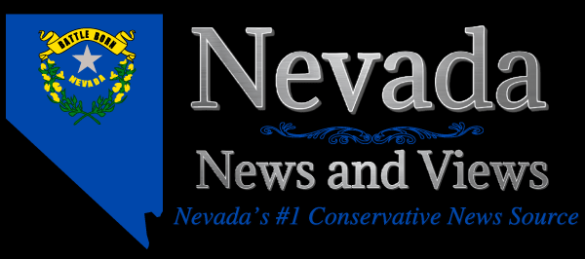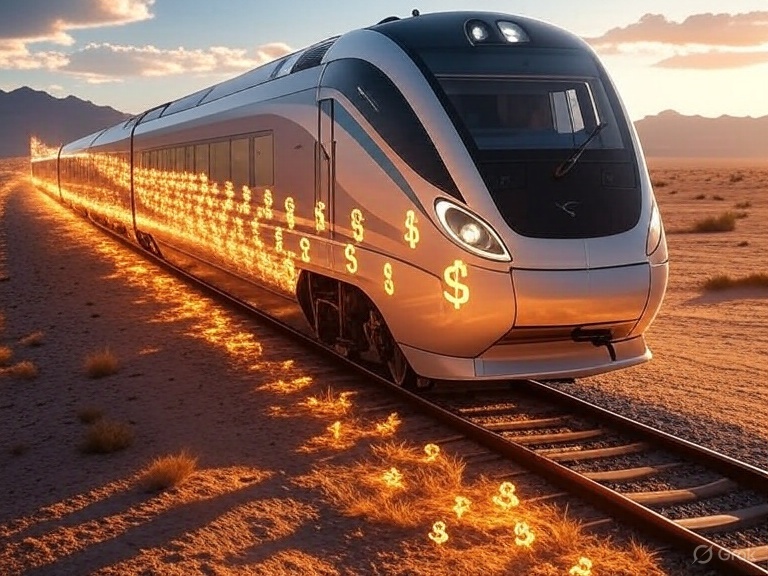There’s a plan to build a high-speed train that would zip passengers from Southern California to Las Vegas in just a couple hours. It’s called Brightline West. And if you haven’t been following this story, now’s a good time to start paying attention.
Because remember when they told us this train would cost $8 billion? Then it jumped to $16 billion. Now we’re looking at $21.5 billion. That’s nearly triple the original price tag. And here’s the kicker – you’re helping pay for it.
What’s Actually Happening
A private company called Brightline West wants to build a train that runs from Rancho Cucamonga, California to Las Vegas. That’s nearly 220 miles of track. Think of it as a bullet train through the desert, running right down the middle of Interstate 15.
The idea sounds pretty cool. Anyone who’s sat in that parking lot of a freeway on a Friday afternoon heading to Vegas knows the pain. The drive can take five or six hours when traffic is bad. This train would cut that way down.
But, the train dumps you in Rancho Cucamonga. That’s 40 miles east of LA. You’ll need to take another train or expensive cab to get downtown. Suddenly that two-and-a-half-hour train ride starts looking less convenient.
But here’s where it gets messy for folks who believe in limited government and free markets.
Your Tax Dollars at Work
The Biden administration handed Brightline West a $3 billion grant. That’s your money. Now the company wants to borrow another $6 billion from the federal government. So we’re not just talking about a subsidy anymore. We’re talking about the government becoming the bank for a private railroad company.
Transportation Secretary Sean Duffy praised the project back in February. He said it was “on budget, on time.” Well, that didn’t age well. Just a few months later, we find out costs have ballooned by billions.
Remember California’s High-Speed Rail Disaster
Here’s why you should be skeptical. California has its own high-speed rail nightmare that should serve as a warning.
Back in 2008, California voters approved Proposition 1A. They were promised a train from San Francisco to LA that would cost $33 billion and be done by 2020. Voters were told it would travel at 220 miles per hour and make the trip in two hours and forty minutes.
Fast forward to today. Not a single mile of high-speed track is operational. The cost has exploded to somewhere between $89 billion and $128 billion. That’s nearly four times the original estimate. The completion date keeps getting pushed back. First 2020. Then 2029. Now maybe 2033. Maybe never.
The route changed. The speed changed. Even the destinations changed. The state spent $950 million that was supposed to go to connectivity projects. Voter-approved language got twisted in court and by the legislature. Assembly Bill 1889 in 2016 changed requirements that voters had approved just eight years earlier.
Now they’re building a section in the Central Valley that will cost over $35 billion and serve about two million riders a year. It won’t connect San Francisco to LA. It will run from Merced to Bakersfield. Two cities most Californians couldn’t find on a map.
Secretary Duffy called California’s project a “boondoggle.” He canceled $4 billion in federal funding in July. The Trump administration said the project had 16 years of failure and zero completed track.
The Free Market Question
Here’s the thing that should bother anyone who believes in capitalism. If this train is such a great business idea, why does it need billions in government money? Private investors should be lining up if the numbers really work. When a company needs the government to write big checks and guarantee loans, that’s usually a red flag.
Brightline West plans to charge between $119 and $133 per ticket. They say they’ll move 11 million passengers a year. Do that math. Even at full capacity, it’s going to take decades to pay back $21 billion. Maybe never.
The Double Standard Problem
What really sticks in the craw is how the Trump administration handled other rail projects. They killed $4 billion for California’s high-speed rail disaster. They also pulled $60 million from a Texas rail project.
But Brightline West? That one gets a pass. Same administration. Same concerns about cost overruns and feasibility. Different outcome.
Critics say the project deserves support because it connects two major cities and could reduce traffic. They point out that the company tried to cut costs by using the freeway median and starting farther from downtown LA. Fair points, but none of that explains why costs tripled or why taxpayers should be on the hook.
What Happens Next
The train won’t open until 2029 now. That’s two more years of delays from the original 2027 target. And if history teaches us anything about big infrastructure projects, costs will probably keep climbing. The company blames labor and materials getting more expensive. But every business faces those challenges. Most don’t get to run to Uncle Sam for bailouts.
What You Can Do
Contact your representatives in Congress. Ask them why they’re supporting loans and grants for private rail companies. Demand accountability for projects that can’t stay on budget.
Support candidates who pledge to keep government out of the business of playing venture capitalist. Vote for people who understand that free markets work better when government stays on the sidelines.
And the next time someone proposes a new rail project with a nice round number for the cost, remember this story. That first number is never the real number.
The opinions expressed by contributors are their own and do not necessarily represent the views of Nevada News & Views. This article was written with the assistance of AI. Please verify information and consult additional sources as needed.



